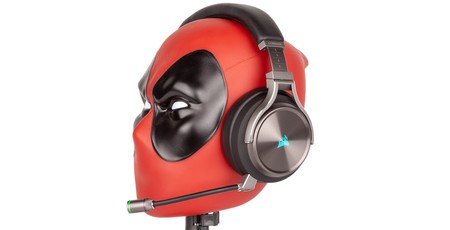
Performance
Actual sound quality from the 50mm drivers is decent but honestly a tad underwhelming given the price point. To be clear, audio across the spectrum is delivered cleanly and flat, and we mean that latter adjective in a good sense, since gaming headsets have a tendency to be artificially and annoyingly bass-heavy. Highs are crisp and clear, the mid-range avoids being cluttered, and bass notes are warm without getting flabby or muddy. However, the overall soundscape fails to truly stand out in any one way, and we found our usual test tracks to be lacking the dynamism and depth we’ve associated with higher-end headsets in the past, even when running the highest quality wired mode. Corsair does not specify the exact DAC it uses, but side-by-side we found the SteelSeries Arctis Pro +GameDAC to be the better-sounding unit. That one uses an ESS Sabre 9018 DAC in the GameDAC, but it is a bit more expensive and lacks any form of wireless connectivity.
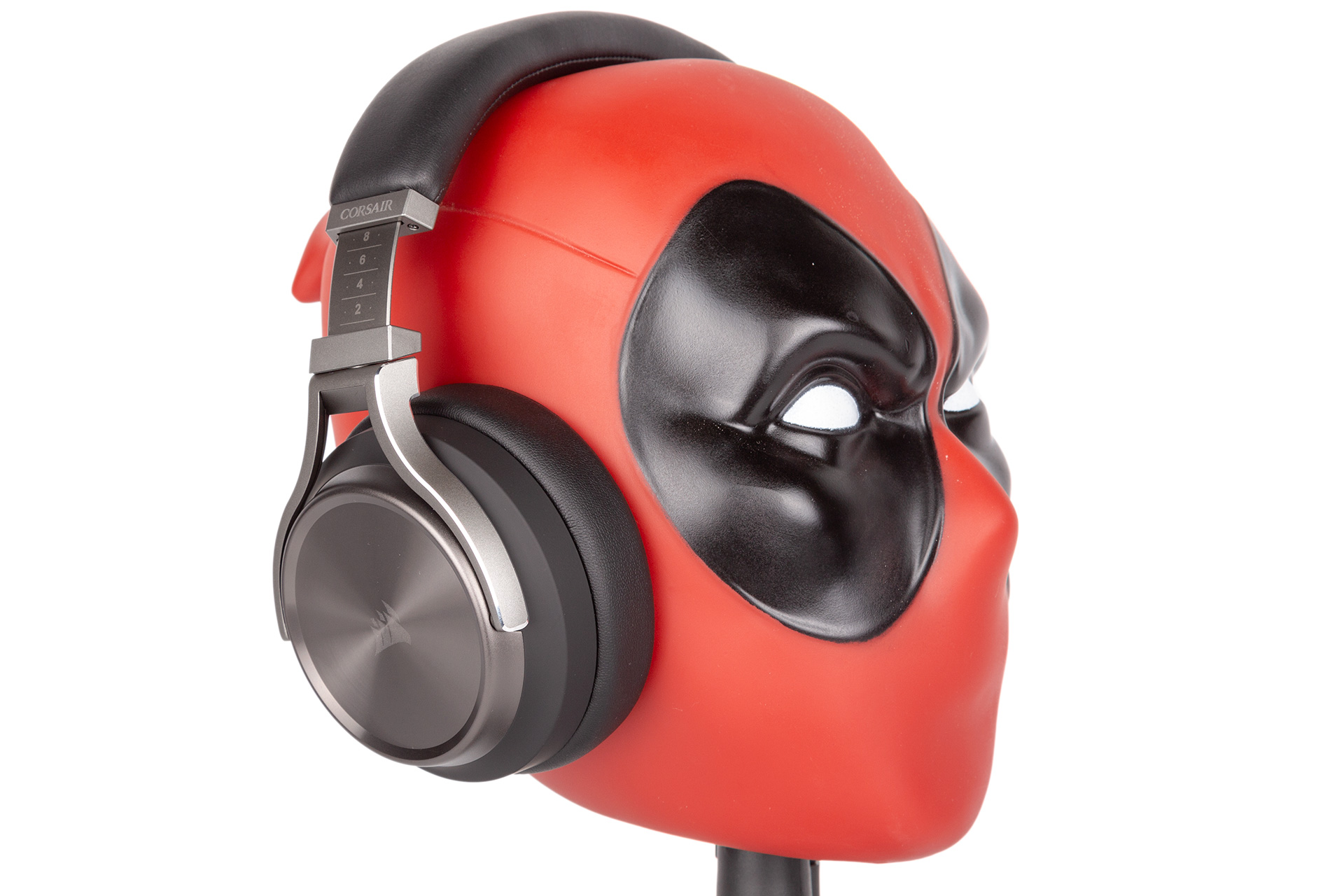
Other positives regarding sound quality are the fact that you can crank things up to full volume without things distorting, and leakage from the cans is impressively low, as the combination of memory foam and pleather works well to seal things. This does mean that longer sessions make your ears get rather warm, but that’s typical for this sort of material combination.
We definitely need to give credit to Corsair for the microphone quality, as it’s certainly one of the best we’ve tried when it comes to gaming headsets. Voice clarity is exceptionally high and natural, and the low-end credentials Corsair claims appear valid. Many microphones can turn voices into tinny replicas, but this microphone retains lower-end frequencies nicely. It’s also excellent at keeping background noise from the cans themselves and from external sources like keyboards down to a minimum without the user having to do anything and even when the mic volume is set to max.
Software
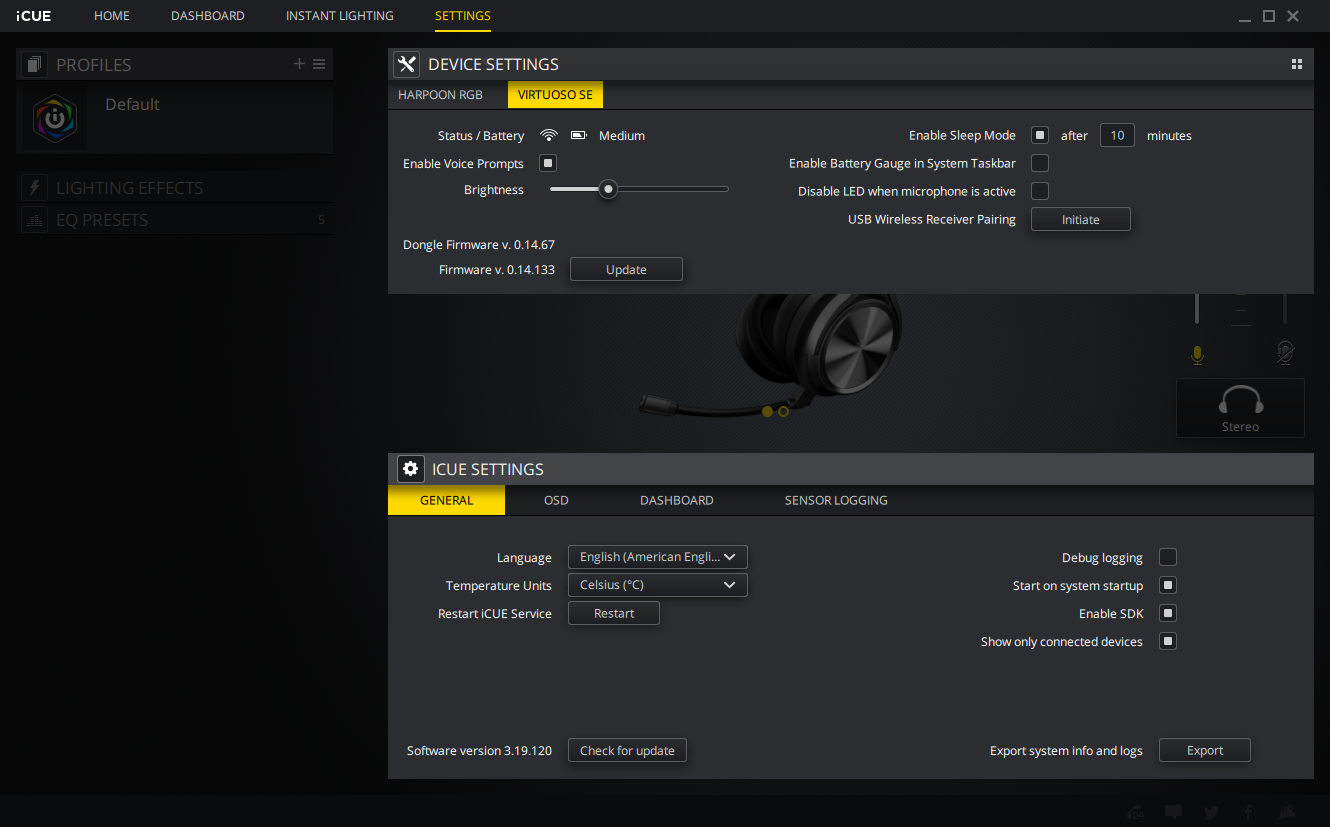
Corsair’s iCUE software certainly isn’t critical to running the Virtuoso, but it does give you some nice customisation options and continues to be intuitive. Under Device Settings, you’re able to disable voice prompts, set the LED brightness to one of three levels or simply switch it off, update the firmware with a single click, change the standby activation time, assign a battery gauge to the taskbar, and reinitiate pairing should it fail.

The software is heavily profile-based, but the Virtuoso RGB Wireless is fully software-driven in this regard, so you cannot save and take settings with you. That’s not really a bad thing given that the main controls are built directly into the headset itself, but it’s still worth keeping in mind if you’re especially into tuning custom EQ settings. Regardless of which menu you pick on the side, you have quick access to 7.1 virtual surround, mic volume, and sidetone volume. On the subject of virtual surround, it appears to be a less advanced implementation than our preferred one, which is currently Dolby DTS: Headphone X, but it still works okay assuming your source is appropriately mixed.
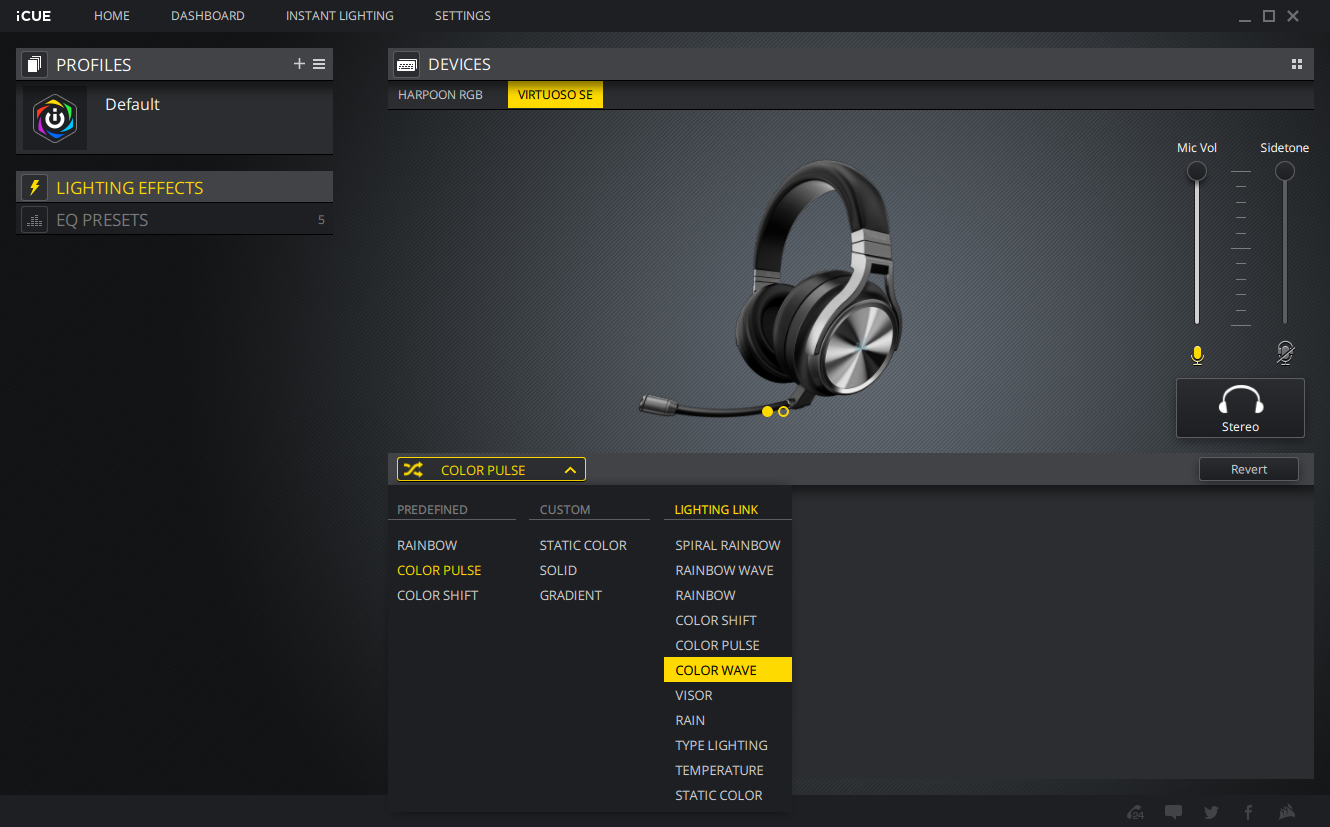
The Lighting Effects menu is unsurprisingly detailed; this is an area of the PC market Corsair has worked hard to be a leader in, and it shows. The relevance of RGB lighting on a headset has always seems somewhat low to us, but it’s there if you want it, and it’s easily disabled if you’d prefer to just save battery life.
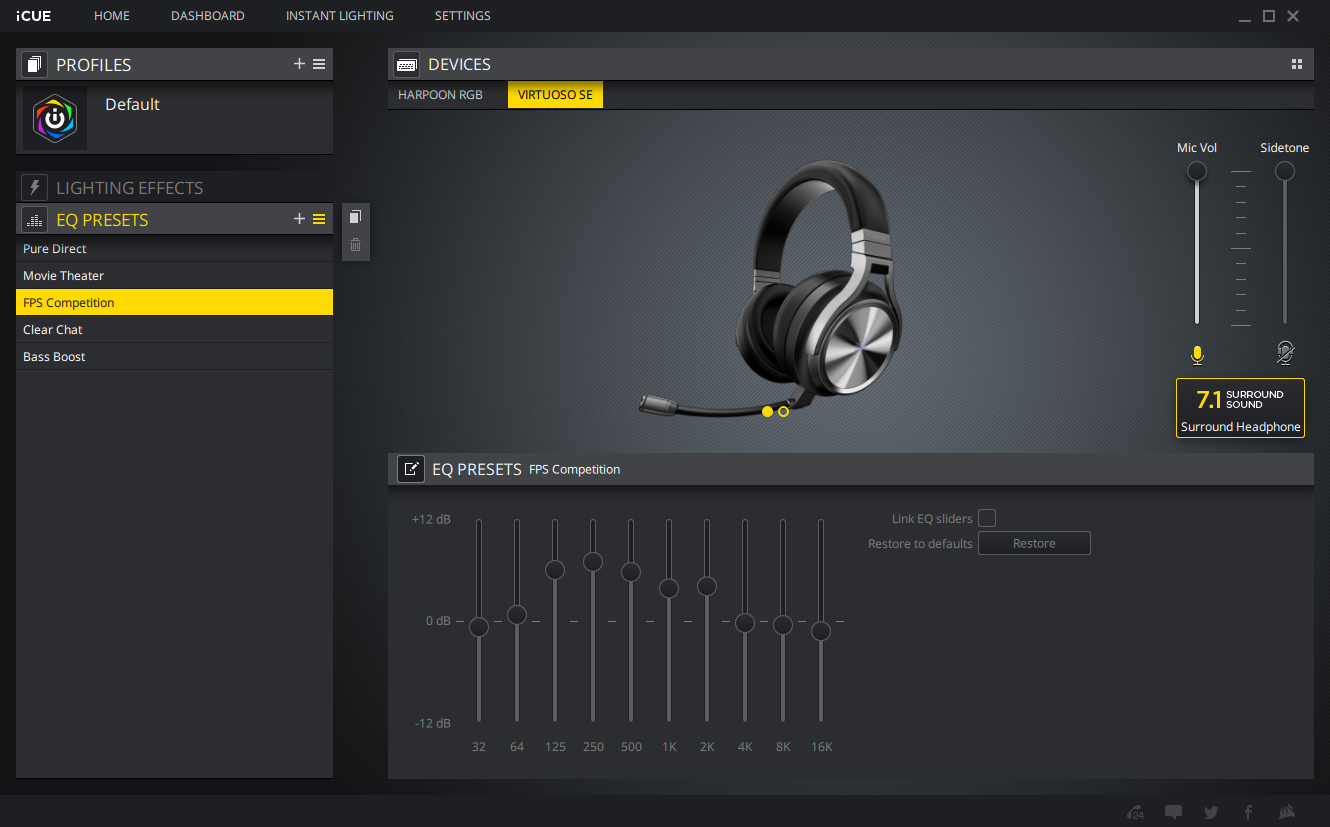
The last menu is the EQ Presets one in which you’ll find five profiles ready-made for you to play with and the ability to create your own with the usual sliders. The ‘Pure Direct’ one is designed as the reference profile and works well, but it’s very easy to tailor the soundscape to your ears, and the preset profiles are not too extreme in any one direction.
Conclusion
Seeking to appeal to a gamer that’s just as likely to use their headset with a traditional gaming PC as a console and/or a mobile device, Corsair has delivered a great-looking set of cans in the Virtuoso RGB Wireless SE, and the nice materials plus the detachable microphone means they can be easily used on the go without embarrassment. Sound quality is solid albeit not outstanding, but the microphone on the SE version is well deserving of high praise. Comfort and build quality are also top notch, and the optional software does its job just fine too.
Competition from SteelSeries’ Arctis Pro headsets is probably the biggest issue Corsair faces given what it’s trying to achieve with Virtuoso, especially as the former have better PS4 compatibility (7.1 surround, for instance, and proper Dolby DTS: Headphone X at that) and better connectivity in general. The audio quality on the wired-only SteelSeries GameDAC one is noticeably superior too, though we haven't tested the wireless version. That said, Corsair undercuts SteelSeries on price, especially when comparing wireless to wireless, and this coupled with a well-rounded design, tasteful lighting, decent software, and a great microphone means it earns its Recommended badge for those seeing a more grown up wireless headset than Corsair has previously been able to offer.


MSI MPG Velox 100R Chassis Review
October 14 2021 | 15:04

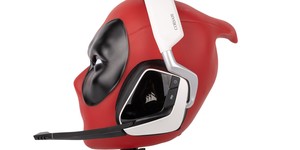
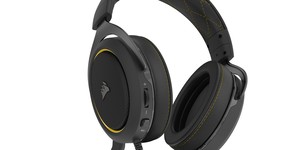
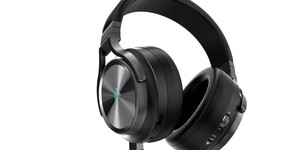




Want to comment? Please log in.